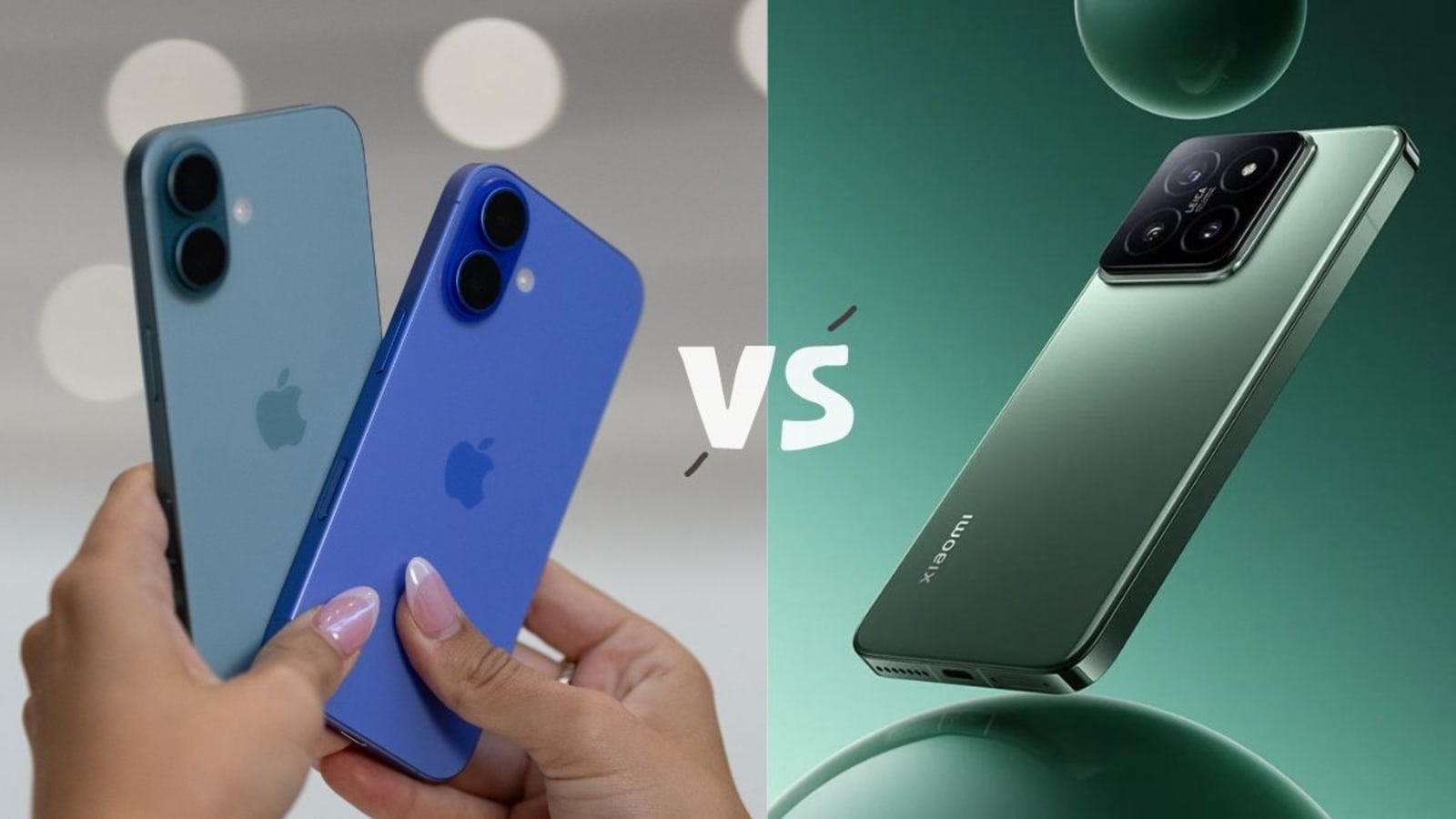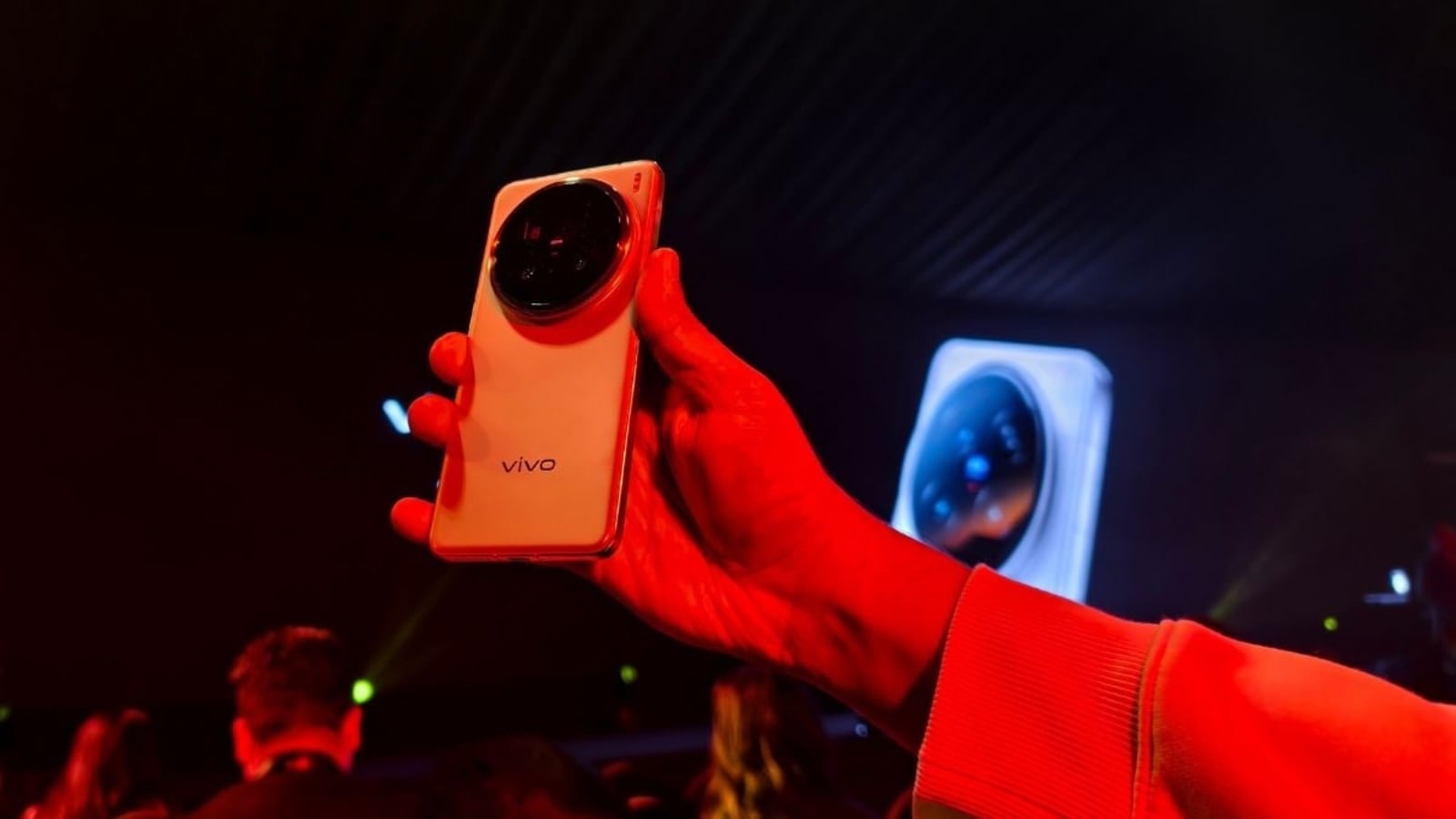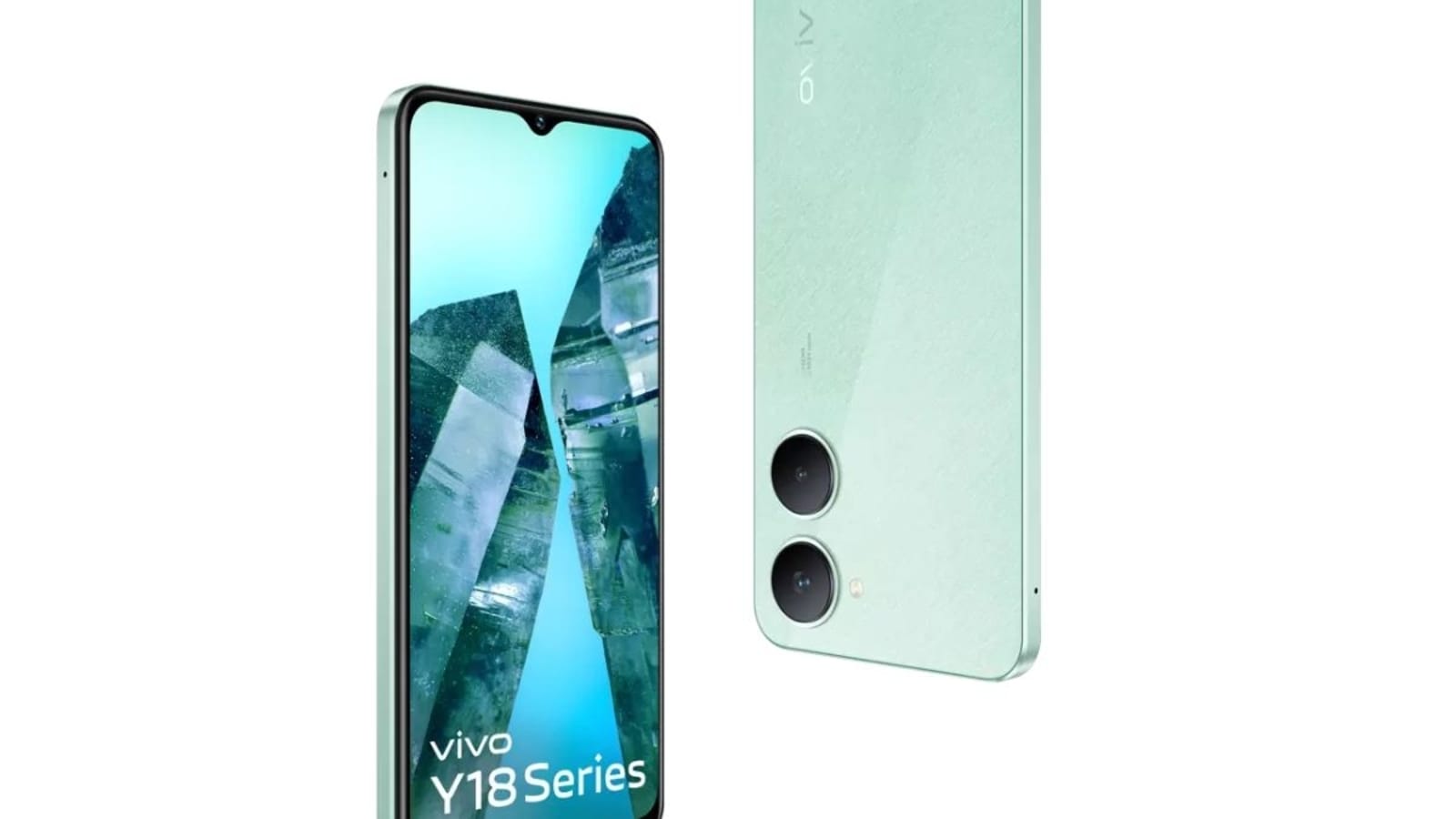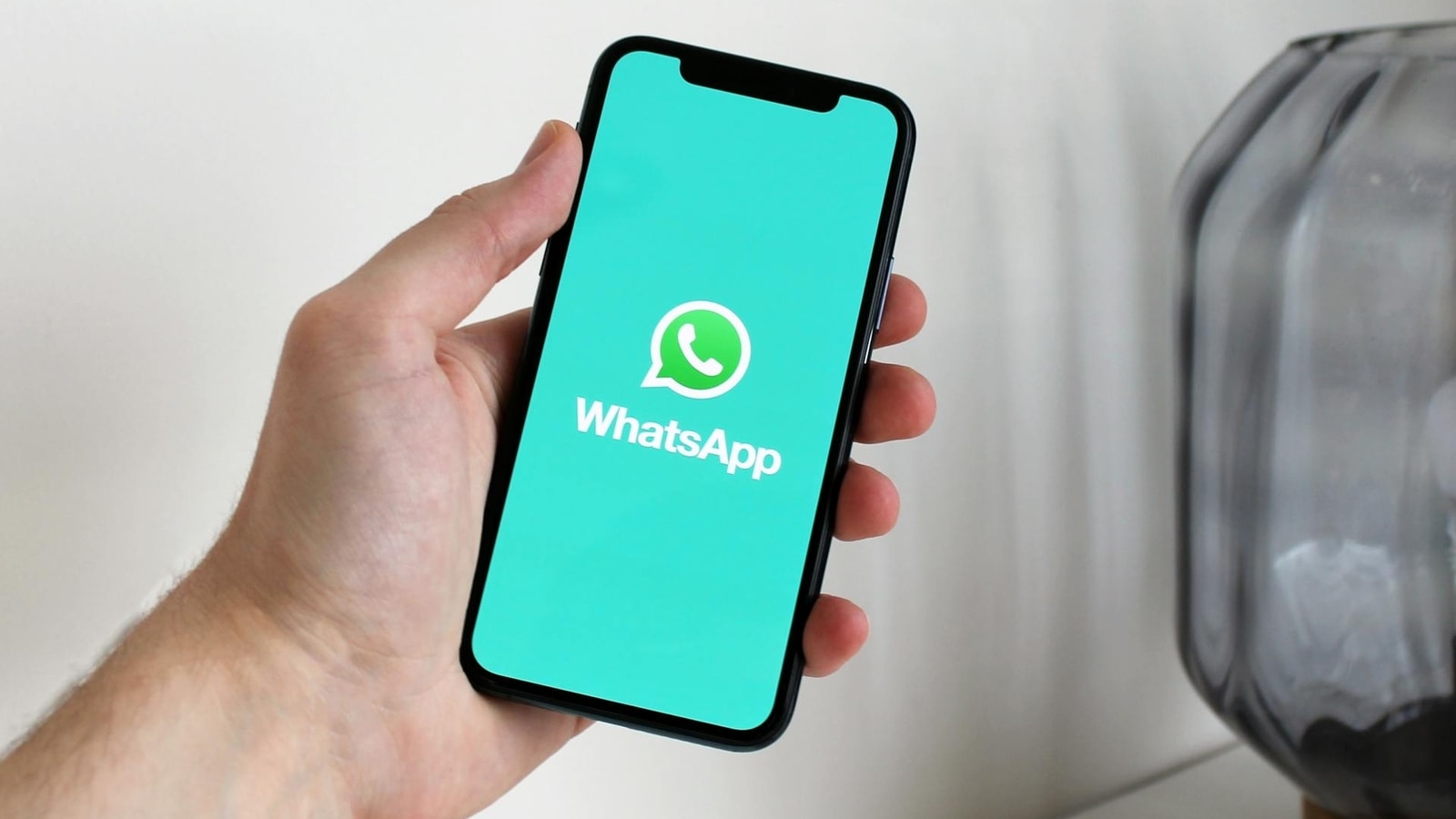iPhone 16 vs. Xiaomi 14: The iPhone 16 and Xiaomi 14 represent the top offerings from Apple and Xiaomi which offer the latest advancements from both tech giants. Each phone brings distinct features to its platform, whether it’s iOS or Android. Here we will break down key areas such as design, display, software, performance, battery, and cameras to help you determine which phone might be the better investment for your needs.
iPhone 16 vs. Xiaomi 14: Design
The iPhone 16 features a glass front and back, supported by an aluminium frame. It meets IP68 standards for dust and water resistance, allowing immersion in up to 6 metres of water for 30 minutes. Users can select from various SIM configurations, including Nano-SIM, dual eSIM, and dual SIM options for the Chinese market.
Also read: iPhone 16 vs iPhone 15: 4 reasons why you should not upgrade to new-generation
Not sure which
mobile to buy?
In comparison, the Xiaomi 14 offers a Gorilla Glass Victus front and either glass or silicone polymer for the back, paired with an aluminium frame. It also holds an IP68 certification but with a lower water resistance rating of 1.5 metres for 30 minutes. Both devices showcase premium build quality, lack a 3.5mm headphone jack, and maintain sleek aesthetics.
While the iPhone 16’s ceramic shield glass provides enhanced durability, Xiaomi’s diverse material choices for the back cater to different user preferences. Additionally, Xiaomi includes an infrared port, a feature absent in the iPhone which enables control over home devices.
Also read: iPhone 16 Plus vs Samsung Galaxy S24 Plus: Know which flagship smartphone to buy
iPhone 16 vs. Xiaomi 14: Display
The iPhone 16 comes with a 6.1-inch Super Retina XDR OLED display, offering a resolution of 1179 x 2556 pixels and a peak brightness of 2000 nits. It supports HDR10 and Dolby Vision, protected by Ceramic Shield glass.
In contrast, the Xiaomi 14 features a slightly larger 6.36-inch LTPO OLED display with a resolution of 1200 x 2670 pixels. Its peak brightness reaches 3000 nits and supports HDR10+, Dolby Vision, and a 120Hz refresh rate. It uses Corning Gorilla Glass Victus for protection.
Both devices support advanced HDR standards, ensuring high-quality video playback and comparable pixel densities, delivering sharp images and text. Dolby Vision enhances the media experience on both displays.
iPhone 16 vs. Xiaomi 14: Performance and Battery
The iPhone 16 runs on the Apple A18 chipset, manufactured using a 3nm process. This setup includes a Hexa-core CPU and a 5-core GPU, with 8GB RAM and storage options up to 512GB. Apple’s iOS 18 optimises performance and multitasking.
On the other hand, the Xiaomi 14 utilises Qualcomm’s Snapdragon 8 Gen 3, built on a 4nm process, featuring an Octa-core CPU and Adreno 750 GPU. It supports up to 16GB of RAM and storage options reaching 1TB. Xiaomi’s HyperOS, based on Android 14, allows for extensive customization.
Both devices exhibit strong performance capabilities, but Xiaomi offers more RAM and storage flexibility. The Snapdragon 8 Gen 3 may excel in gaming and AI tasks, while the A18 chip stands out for single-core performance, enhancing daily app interactions.
In terms of battery life, the Xiaomi 14 features a 4610 mAh battery with 90W wired charging, achieving a full charge in approximately 31 minutes. It also supports 50W wireless charging and 10W reverse wireless charging. The iPhone 16, with a smaller, unspecified battery, offers 25W wireless charging and reverse wired charging capabilities.
Also read: iPhone 16 Pro vs Google Pixel 9 Pro: Know which Pro model is worth the hype
iPhone 16 vs. Xiaomi 14: Camera Comparison
The iPhone 16 includes a dual-camera system featuring a 48MP wide lens and a 12MP ultrawide lens. It supports 4K video recording with Dolby Vision HDR and stereo sound recording. The front camera consists of a 12MP sensor with 3D facial recognition support.
In contrast, the Xiaomi 14 is equipped with a triple-camera system, features a 50MP wide lens, a 50MP telephoto lens (3.2x optical zoom), and a 50 MP ultra-wide lens. This Leica-branded system allows for diverse shooting options and supports 8K video recording. Its front camera uses a 32MP sensor, offering higher resolution selfies than the iPhone.
Overall, the Xiaomi 14’s triple-camera setup provides additional versatility with an optical zoom lens, a capability absent in the iPhone. Furthermore, Xiaomi’s ability to record in 8K enhances its appeal for high-resolution content creation. The 32 MP front camera also delivers superior resolution for selfies compared to the iPhone’s 12MP camera.
In short, both the iPhone 16 and Xiaomi 14 bring strong features, but their appeal depends on what you’re prioritising. The iPhone 16 excels with its premium build, consistent performance, and Apple’s ecosystem, while the Xiaomi 14 offers more versatility in design, camera options, and charging capabilities. Those seeking a flexible Android device with superior battery life and camera variety might find Xiaomi the better choice, while those invested in the Apple ecosystem may prefer the iPhone’s seamless software integration.







